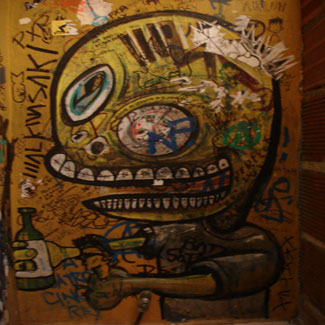
Sensation seeking and alcohol drinking among college students
Numerous factors have been associated with alcohol drinking among young adults. Typically, the psychological trait of sensation seeking, has been found to be correlated with alcohol consumption in various populations. This study examined the relationship between sensation seeking and blood–alcohol concentration at the end of an ‘‘open bar’’ party in a sample of college students.
Alcohol abuse has a number of negative health consequences. The most well known is liver damage and negative effects on brain and on neuropsychological functioning. It may also lead indirectly to a number of other health problems. First, alcohol abuse reduces the association between attitudes and behaviour, thus people are more likely to engage in behaviours that are not in line with their actual beliefs and that may entail dangerous consequences including unsafe sex and drunk driving. Second, people who are drunk are not able to think rationally as they could when sober. For example, a study from 1998 concluded that women who were drunk saw attractive but promiscuous men as much higher in ‘‘relationship potential’’ than did women who were sober. It seems as if a sober woman is apt to recognize that an attractive man who reports consistent sexual promiscuity is probably not interested in having a long-term relationship while a drunk woman is much more likely to misjudge the situation. Finally, alcohol abuse may create a feeling that one is invulnerable to the dangers he or she might normally engage in. This is why people who know that driving while intoxicated is dangerous are unable to face the facts when drunk and believe they are fit to drive.
Nowadays, more extreme forms of drinking by college students have been escalating. Indeed, a phenomenon of heavy episodic consumption has infiltrated college campuses in United States and Europe for 10 years through the popularization of ‘‘open bar’’ parties. ‘‘Open bar’’ parties are musical and dance evenings arranged by college student associations which give access to free (or cheap) booze. The availability of large volumes of alcohol and low sale prices are associated with higher binge drinking rates in college students, which typically results in various potential harms including drunk driving, getting behind in academic work, or engaging in unexplained sexual activity. The now large literature on the etiology of drinking problems has supported the link between certain personality traits (e.g., neuroticism, negative affect, impulsivity/disinhibition, or extraversion/sociability) and alcohol consumption.
The present study aims to analyse the contribution of the sensation-seeking trait in blood–alcohol concentration at the end of an open bar party in a sample of French college students. This choice was driven by the fact that alcohol abuse has consistently been reported as a behavioural manifestation of sensation seeking tendencies among high-school and college samples. Sensation-seeking is ‘‘a trait defined by the seeking of varied, novel, complex, and intense sensations and experiences, and the willingness to take physical, social, legal, and financial risks for the sake of such experience’’.
In addition, it seems that, so far, researchers have chosen to rely on data from self-report instruments for assessing alcohol consumption. This might raise suspicion about previous findings since questions that have a ‘‘socially correct answer’’ – as is the case when inquiring about alcohol consumption – are likely to incite the participant to respond in a socially desirable way. Thus, the present study offers a direct testing of the association between sensation seeking trait (and its various subscales) and alcohol consumption (as measured by blood–alcohol concentration) among male and female college participating in an ‘‘open bar’’ party.
In conclusion, new insight on the contribution of sensation seeking in binge drinking has been gained using direct assessment of blood–alcohol concentration. Although the results of the current study do not clearly support the idea that sensation seeking is the major predictor of heavy episodic alcohol consumption among French college students, high levels of sensation seeking were identified in those attending open bar parties. Our results support the relationship between disinhibition and blood–alcohol concentration among women. In men however, experience seeking was found to be of equal significance than disinhibition. As the sensation seeking ratings were especially high for both sexes as compared to the population norms, the possibility that open bar participants share a specific profile of personality is discussed.
Understanding the variables related to abuse drinking is essential in identifying those in need of therapy and in informing prevention and intervention strategies. It should be remembered that heavy episodic alcohol consumption is a high-risk behaviour since many individual problems are alcohol-related in college students. These include: accidents and injuries, driving under the influence of alcohol, suicide, fights and interpersonal violence, unprotected sex or unwanted sexual encounters. In contrast to many other causes of death, diseases and injuries, these alcohol-related problems are due to preventable, high-risk behaviours. Previous studies have shown that brief interventions in clinical settings have been shown to be effective in reducing harmful drinking by adults.
References
"Association between sensation seeking and alcohol consumption in French college students: Some ecological data collected in "open bar" parties" Legrand, FD; Gomà-i-Freixanet, M; Kaltenbach, ML; Joly, PM. PERSONALITY AND INDIVIDUAL DIFFERENCES, 43 (7): 1950-1959 NOV 2007


